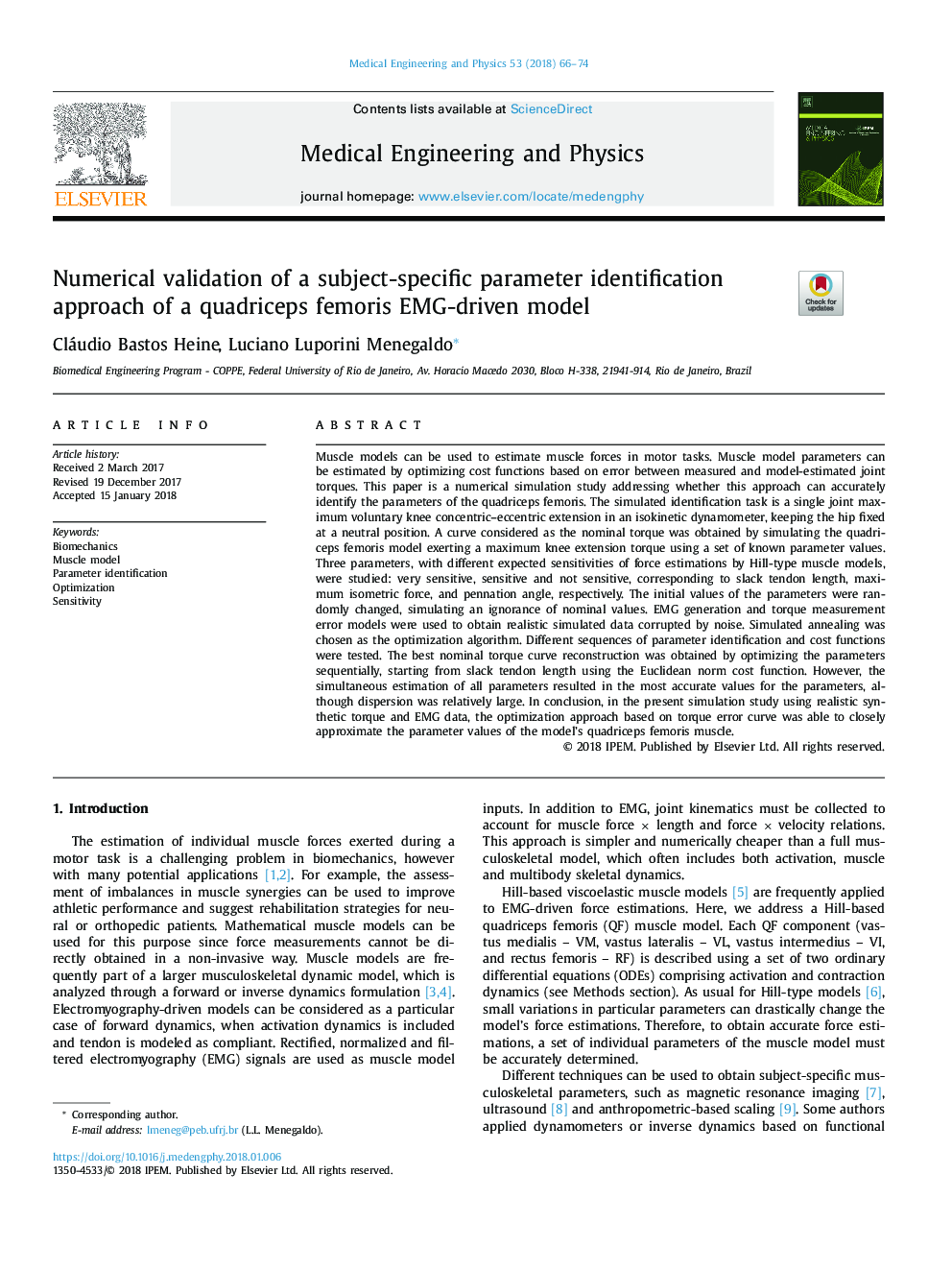| کد مقاله | کد نشریه | سال انتشار | مقاله انگلیسی | نسخه تمام متن |
|---|---|---|---|---|
| 7237453 | 1471121 | 2018 | 9 صفحه PDF | دانلود رایگان |
عنوان انگلیسی مقاله ISI
Numerical validation of a subject-specific parameter identification approach of a quadriceps femoris EMG-driven model
دانلود مقاله + سفارش ترجمه
دانلود مقاله ISI انگلیسی
رایگان برای ایرانیان
کلمات کلیدی
موضوعات مرتبط
مهندسی و علوم پایه
سایر رشته های مهندسی
مهندسی پزشکی
پیش نمایش صفحه اول مقاله

چکیده انگلیسی
Muscle models can be used to estimate muscle forces in motor tasks. Muscle model parameters can be estimated by optimizing cost functions based on error between measured and model-estimated joint torques. This paper is a numerical simulation study addressing whether this approach can accurately identify the parameters of the quadriceps femoris. The simulated identification task is a single joint maximum voluntary knee concentric-eccentric extension in an isokinetic dynamometer, keeping the hip fixed at a neutral position. A curve considered as the nominal torque was obtained by simulating the quadriceps femoris model exerting a maximum knee extension torque using a set of known parameter values. Three parameters, with different expected sensitivities of force estimations by Hill-type muscle models, were studied: very sensitive, sensitive and not sensitive, corresponding to slack tendon length, maximum isometric force, and pennation angle, respectively. The initial values of the parameters were randomly changed, simulating an ignorance of nominal values. EMG generation and torque measurement error models were used to obtain realistic simulated data corrupted by noise. Simulated annealing was chosen as the optimization algorithm. Different sequences of parameter identification and cost functions were tested. The best nominal torque curve reconstruction was obtained by optimizing the parameters sequentially, starting from slack tendon length using the Euclidean norm cost function. However, the simultaneous estimation of all parameters resulted in the most accurate values for the parameters, although dispersion was relatively large. In conclusion, in the present simulation study using realistic synthetic torque and EMG data, the optimization approach based on torque error curve was able to closely approximate the parameter values of the model's quadriceps femoris muscle.
ناشر
Database: Elsevier - ScienceDirect (ساینس دایرکت)
Journal: Medical Engineering & Physics - Volume 53, March 2018, Pages 66-74
Journal: Medical Engineering & Physics - Volume 53, March 2018, Pages 66-74
نویسندگان
Cláudio Bastos Heine, Luciano Luporini Menegaldo,